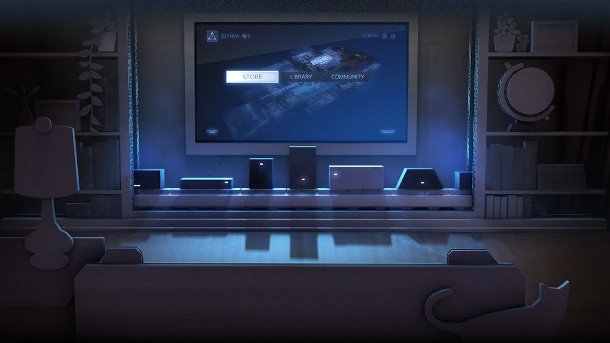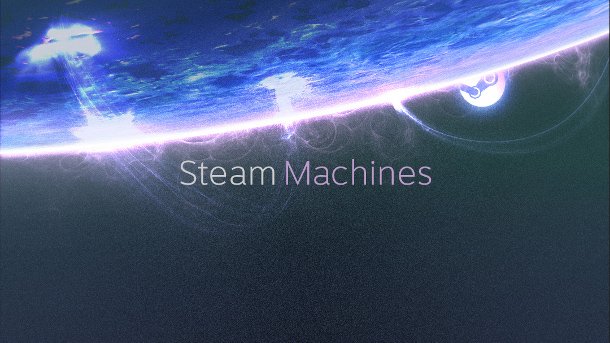Exploring Valve's masterplan: on SteamOS, Steam Machines and the future of the PC

Steam Machines: server suggestions
Yesterday Valve revealed the specs for their prototype Steam boxes. For an idea of how long SteamOS and its companion box have been in the pipeline, take a look at our series of interviews with Gabe and other members of Valve from September 2010. "So my job is always changing, right? That's the nature of the industry; it changes for a lot of people here. So right now I'm thinking a lot about longer term stuff," Newell told Tom , listing, among other things, "thin client architecture" as an avenue of exploration.
"You could have one PC and eight televisions and eight controllers and everybody getting great performance."
You can already see the results of that in SteamOS's ability to communicate with a Windows PC to stream incompatible games, but Newell seems to be planning to extend such capabilities in the future. In his interview with The Verge , he talked about the then "Steam Box" being able to send data through to multiple monitors.
"The Steam Box will also be a server. Any PC can serve multiple monitors, so over time, the next-generation (post-Kepler) you can have one GPU that's serving up eight simultaneous game calls. So you could have one PC and eight televisions and eight controllers and everybody getting great performance out of it. We're used to having one monitor, or two monitors — now we're saying let's expand that a little bit."
Clearly that's not a feature that you'll find out of the box, but then, that's the benefit of Steam Machines' malleability. Essentially, any device running SteamOS becomes a de facto Steam Machine, and - as their announcement post explains - "The specific machine we're testing is designed for users who want the most control possible over their hardware."

Pay particular attention to the set up mentioned in Newell's previous scenario. "One PC and eight televisions and eight controllers." That's specifically in relation to a Steam Machine as a server, not as a regular PC with an absurd number of HDMI slots. But what Newell doesn't mention is the eight PCs you'd presumably need receiving a signal from the main box. A few possibilities exist, of which:
- He forgot.
- The open nature of SteamOS allows for the possibility of a lightweight version being installed directly onto TVs.
Theoretically it should be possible. All it would need is a version of the OS specced purely to receive a stream from the central PC/Steam Machine. Lord knows, TV manufacturers are in desperate need of a valid reason to flog us more flatscreens (unless you want an expensive new 3D telly ... anyone? No?). Then there are small devices like Google's Chromecast and the Raspberry Pi, variations on which could network home entertainment servers with multiple screens/controllers. "Thin client architecture" doesn't have a defined shape yet.
"'Thin client architecture' doesn't have a defined shape"
That's not even the full extent of the futurism we can wring out of Newell's scenario. An eight player set up doesn't make sense as a luxury split-screen replacement, because PC games are traditionally not designed to support simultaneous players offline. To be of use outside very specific examples, the Steam Machine would need to act as a bespoke LAN, simultaneously running the profiles of multiple Steam users, and their copies of the game.
The biggest gaming news, reviews and hardware deals
Keep up to date with the most important stories and the best deals, as picked by the PC Gamer team.
I'll admit that seems a little too far in the realms of wishful thinking. Even so, Steam's Big Picture mode can already support multiple accounts, which opens the possibility for them to one day take simultaneous logins. The flexibility of the system wouldn't even need to be that dramatic. If running multiple games is too far-fetched, it's possible other accounts could make use of some form of variation to Steam's family sharing - kids logging in to their profile from their own TV, accessing a house-wide Steam account with an added parental filter. If Valve do want Steam Machines as the server powering household entertainment, they're going to want to make the experience be as smooth and natural as possible.
On the next page: Steam's new controller might look a bit odd, but things could get a lot weirder.

Phil has been writing for PC Gamer for nearly a decade, starting out as a freelance writer covering everything from free games to MMOs. He eventually joined full-time as a news writer, before moving to the magazine to review immersive sims, RPGs and Hitman games. Now he leads PC Gamer's UK team, but still sometimes finds the time to write about his ongoing obsessions with Destiny 2, GTA Online and Apex Legends. When he's not levelling up battle passes, he's checking out the latest tactics game or dipping back into Guild Wars 2. He's largely responsible for the whole Tub Geralt thing, but still isn't sorry.

